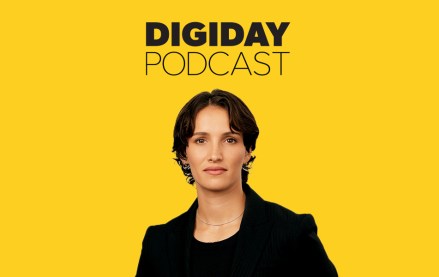How Salon, TVTropes and Snopes improved programmatic CPMs with traffic shaping

Subscribe: Apple Podcasts • Spotify
As the CRO of Salon.com, Justin Wohl is a self-proclaimed programmatic purist, meaning that when it comes to ad sales, the news publisher is almost entirely monetized through the open programmatic marketplace.
After joining Salon in 2017, Wohl said that it was clear direct-sold advertising wasn’t performing and his team reconfigured to focus exclusively on the open marketplace. Two years later, Salon achieved profitability.
Today, Wohl — who also serves as the CRO of TVTropes and Snopes — is using traffic shaping to maintain which ad inventory is being sold across each brand. In the latest episode of the Digiday Podcast, Wohl talks about why he’s willing to take a gross short-term revenue hit (of “a few percentage points”) to purify how his brands are sold in the programmatic open marketplace and ultimately improve the CPMs that his team can charge.
Below are highlights from the conversation, which have been lightly edited and condensed for clarity.
How publishers can take it upon themselves to curate premium programmatic inventory
[There are] two sides of the situation that lead to the middle where publishers need to take on traffic shaping efforts of their own. The first [is] coming from the evidence that browsers perform differently, [which] should initially tell publishers that they should treat an impression opportunity in Safari differently than they treat an impression opportunity in Chrome. They are clearly getting different responses from the market for those things so they should not continue to be sold in the same manner.
And then on the other side, if the SSPs that publishers send their requests to are doing some level of filtering, before that request is then passed on to a DSP to buy it, publishers need to get smarter about that as well. Because if we are sending texts that don’t get answered up to the buy side, we need to curb that behavior. We need to start being smarter about the requests that we make, so that we can be better partners to those working to represent our inventory for us. Ultimately, if I send more bid requests to an SSP partner that can be one, I become a more profitable publisher partner to my SSP because they no longer have to filter out as many unwitting or unsellable requests from me.
Manually traffic shaping could be the route to higher CPMs
If we continue to prune in this direction and figure out what bid requests are not worth sending or not worth selling as a publisher, we can incrementally charge more for the ones that are worth doing. So the open market programmatic approach, especially without other competing media orders on the publisher side with a lack of direct sold business, means that every impression opportunity is available for the buy-side to figure out if it’s the right one for them or not. And [that’s] inherently a margin that publishers give up, if we’re selling a really good opportunity at the same starting price as what we know is a pretty bad opportunity.
His philosophy on diversifying programmatic revenue with programmatic guaranteed and private marketplaces
The buyers still exist, who want to find the inventory through those channels, but that’s not scalable, necessarily, for the programmatic operation. It gets you rapidly back into position of managing multiple direct buyer clients, of looking at the spend against each of your deals, or PMPs, [of] needing [more] analytics and follow-up and further sales efforts to get them spending again — all of which kind of takes away from the efficiency and the purpose of being a programmatic purist.
So while I do intend to satisfy the customers that exist with those desires, now in the near term, I do see in 2024 and beyond that the programmatic auction will work efficiently enough in the open [market] alone, to still sell to those same buyers, because the impression opportunities that I put into the open auction will be different than they are today.
More in Podcasts

How TikTok’s ‘The Secret Lives of Mormon Wives’ landed on Hulu, with Select Management Group’s Danielle Pistotnik
The talent manager and executive producer of “The Secret Lives of Mormon Wives” joined the Digiday Podcast to break down the process of the reality show finding a home on Hulu.

Digiday Podcast at Cannes: Former Bachelorette Rachel Lindsay makes the case for creators
Between panels and parties, creators are looking to get face time with ad execs, brand marketers and partners like Spotify. However, rather than coming to the Croisette to strike deals, they’re playing a long game.

Digiday Podcast at Cannes: From center stage to closed doors, inside X’s quiet Cannes strategy
Once a Cannes hotspot, Twitter Beach is no more. In this episode, we explore X’s quiet retreat from the Croisette—and why no one’s talking about the TikTok ban either.








